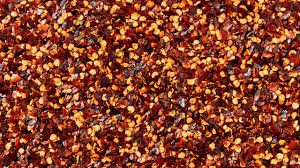The easiest way for a farmer in Kenya to make money is to cultivate pepper, despite the fact that it is one of the least popular crops to grow. Nigeria, Ghana, and the rest of Africa make most of their money from crude oil, with a little portion coming from gold.
There has never been enough commercial pepper production in Kenya to satisfy the country’s daily pepper consumption. A farmer who intends to plant a large quantity of pepper will not be left out because of the ongoing demand for pepper.
There are so many new people born and arriving in the country every day that pepper is used in just about every dish. Those who plan to cultivate peppers should be heartened by this one piece of information.
Then, what do you need to begin cultivating peppers? In order to start a pepper farm, all you need is a location with suitable soil and water or irrigation, a few high-quality pepper plants, and a little money.
Here’s a step-by-step guide to growing peppers in Kenya and Africa for those of you interested:
How To Start Cultivating Pepper In Kenya Step By Step Guide

With a few simple steps listed below, you may begin pepper planting in Kenya now.
Step one: Procure Farmland
The first thing to do is consider purchasing farmland and getting it ready for usage.
If you don’t already own farmland, the first thing you should do is buy or lease it in order to save some money.
Using greenhouse technology to grow peppers is a major advantage, but several combination tactics can produce similar results.
Read Also: How To Grow Onions In Kenya [ Beginners Guide Pdf]
Farmland needs to be plowed.
You can begin preparing your field by performing the following easy steps: The first step is to remove all grasses and huge trees from the farmland, as well as any obstructions you may face.
Begin preparing the transplanting bed or ridges.
A new farmer may be perplexed by the phrase “bed.”. Simply raising earth in a mound, usually in the form of a bed, is what it means.
For seedling care as well as for growth, this bed is a great option for you. Your farms will require ridges to sow the pepper seed once the foundation has been created. Please feel free to ask any further questions in the comment section.
Step 2: Purchase good specie of pepper seed or seedling

When it comes to farming, it’s essential to consider the type and species of seed you intend to use. An agro store selling high-quality agricultural products will help you find the right variety of pepper to use in your pepper production.
We’ll recommend a business in Kenya where you may buy quality pepper seedlings or any other kind of plant seedling if you leave a comment below!
Among the most popular and extensively used peppers in Kenya are the Capsicum annuum Bell pepper and the Capsicum frutescens Chilli pepper.
Seed selection is influenced by the local climate and the prevalence of disease and pests. Hybrid Pepper Seed offers the best combination of yield and disease resistance.
Using high-quality seeds and appropriate growing procedures, one acre of peppers can be harvested.
Step 3: Nurse Pepper Seed In The Nursery
It’s best to get started on the nursery as soon as possible if you’re starting with pepper seed rather than a seedling. How do you then start taking care of the pepper seed? For this example, let’s use a plot of land that is around 100cm by 100cm, with a 70cm buffer between the rows.
Spray the nursery to get rid of any insects or diseases that could harm the plant in the future.
Watering the soil and using netting or palm trees to cover it will help to keep moisture in. After a period of 8 to 10 days, begin seeding the bed.
Read also: How To Start Cashew Farming Step By Step Guide
Prior to sowing, the soil should be let soak for at least a few hours in order to soften it. The seedlings should be thinned to 4 x 4cm spacing after 20 days of seed propagation.
For 45 days at a stretch, you’ll need some kind of shelter to protect your crops from high heat and heavy rain.
The shade can be removed after this period of time. During the cooler hours of the day, seedlings should not be overwatered.
Step 4: Begin Transplanting pepper seedlings from the nursery
After you’ve completed nursing, you may begin moving your pepper seeds to the bed you prepared in step one.
To increase their chances of survival and facilitate their removal from the seedbed, water the seedlings the day before they are to be moved.
Take care to harden seedlings before transplanting them into a new location. Between rows, seedlings on farms can keep a 50–60 cm spacer.
Step 5: practice weeding and pest control measures
Using fungicides and insecticides on a regular basis is the best way to keep disease and pests at bay and increase productivity on your farms and nurseries.
Prior to harvest, weeding can be done three times.
Step 6: Start fertilizer application
Fertilizer is necessary for the best results from your crops. After two weeks after transplanting, use NPK fertilizer. The second time it should be used is when the bloom is just beginning to form and begin to produce its initial set of leaves.
Step 7: Start Harvesting
For clients, nothing is better than being able to harvest many pepper crops at once. It can take up to three months for peppers to be harvested, depending on the type.
Chilies can live for up to two or three years and produce fruit. As a result, the return on investment is quite significant. This could be a hidden treasure for you.
Pepper Farming In Kenya Pdf
Here is a pdf guide on everything you need to know about pepper farming in Kenya here
How Long Does Chilli Take To Grow In Kenya?
Chilli pepper can take up to 150 days before it grows to maturity.
Is Chilli Farming Profitable In Kenya?
Yes, pepper farming is lucrative and profitable in Kenya, With an investment of Sh85,000, a farmer can expect to achieve a profit of roughly Sh140,000 from half an acre of land.
Conclusion
Profitable pepper growing operations may be started by farmers in a short amount of time with minimal effort and can be monitored easily as well as set up.
Start-up costs for starting a pepper farm in Kenya range from as little as Ksh 2,000 to as much as Ksh 30,000, depending on the size of your farm, your soil quality, water availability, and other factors.
Please feel free to leave a comment if you have any further questions or concerns.




One Reply to “[Beginners Guide] How To Grow Pepper In Kenya”